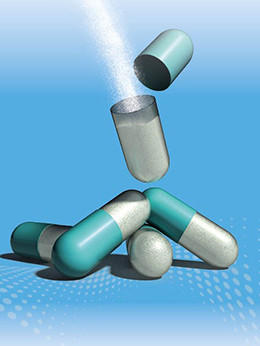- Home
- Blog
- News
- Basics
- Sources
- Agencies, Regulatory & Organisations
- CERSI Excipients Browser
- Excipient Report
- Excipient DMF List
- EXCiPACT Certified Companies
- Excipient Documentation
- Excipient EINECS Numbers
- Excipient E-Numbers
- FDA Inactive Ingredient List
- FDA GRAS Substances (SCOGS) Database
- IPEC Americas
- USP - U.S. Pharmacopeia
- Definitions
- Whitepapers / Publications
- Supplier
- Services
- Media
- Events
- 1st pharmaexcipients Poster Award
- Event Calendar
- Events featured by pharma-excipients
- 4th Annual Formulation & Drug Delivery Congress
- DDF Summit
- ExcipientFest Americas
- ExcipientFest Asia
- Global CompliancePanel
- International Conference and Exhibition on Pharmaceutics & Novel Drug Delivery Systems
- Formulation & Drug Delivery USA Congress
- Laboratory Medicine 2018
- Making Pharmaceuticals Europe
- Making Pharmaceuticals Exhibition
- Pharma Integrates
- PharmaExcipients China @CPhI China
- TTC Technology Training Center
- Jobs
- Online Sourcing
- Contact
24. June 2018
Co-processed excipients may enhance functionality and reduce drawbacks of traditional excipients for the manufacture of tablets on a commercial scale. The following study aimed to characterise a range of co-processed excipients that may prove suitable for dispersible tablet formulations prepared by direct compression. Co-processed excipients were lubricated and compressed into 10.5-mm convex tablets using a Phoenix compaction simulator. Compression profiles were generated by varying the...
17. September 2017
StarCap 1500 is a unique co-processed mixture of globally accepted excipients, corn starch and pregelatinized starch, designed for use in capsules and tablets. StarCap 1500 is an inert free-flowing compressible excipient with excellent disintegration characteristics. The flow properties of StarCap1500 are ideal for capsule filling applications. StarCap 1500 flows smoothly with minimal dusting or adherence to contact surfaces. This corresponds to a cleaner filling operation with lower variation...
18. April 2016
In the present study an attempt has been made to evaluate Ocimum bascilium mucilage coprocessed with Mannitol as a novel super disintegrant. Coprocessed excipients were prepared by solvent evaporation method and evaluated in the formulation of mouth dissolving tablets of Terbutaline sulphate. Formulated mouth dissolving tablets were characterised for physicochemical parameters like hardness, friability, weight variation, disintegration time, drug content and in vitro drug release behaviour. The...
04. March 2016
Developing orally disintegrating tablets (ODTs) is a worldwide trend, but it’s particularly popular in Japan, where formulators at innovator companies, generic drug companies, and contract manufacturers compete to develop new ODTs. In fact, Japan accounts for the largest share of ODTs in the world [1]. Traditionally, manufacturing ODTs was a wet process that required special manufacturing equipment. Lyophilization is one example. In recent years, however, new excipients and excipient blends...
19. January 2016
This paper deals with a study of the novel coprocessed dry binder Combilac®, which contains 70% of α-lactose monohydrate, 20% of microcrystalline cellulose and 10% of native corn starch. These tests include flow properties, compressibility, lubricant sensitivity, tensile strength and disintegration time of tablets. Compressibility is evaluated by means of the energy profile of compression process, test of stress relaxation and tablet strength. More
24. July 2015
24. February 2015
IPEC-Americas Inc June 2013 J. Excipients and Food Chem. 4 (2) 2013 http://www.academia.edu/10939190/Development_and_evaluation_of_a_novel_multifunctional_coprocessed_excipient_via_roller_compaction_of_α-Lactose_Monohydrate_and_Magnesium_Silicate


